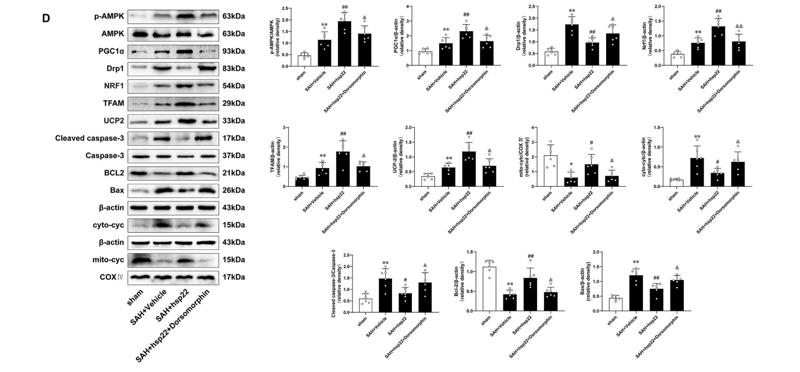UCP2 Antibody - #DF8626
| Product: | UCP2 Antibody |
| Catalog: | DF8626 |
| Description: | Rabbit polyclonal antibody to UCP2 |
| Application: | WB IHC IF/ICC |
| Cited expt.: | WB |
| Reactivity: | Human, Mouse, Rat |
| Prediction: | Pig, Zebrafish, Bovine, Horse, Sheep, Rabbit, Dog, Xenopus |
| Mol.Wt.: | 33 kDa; 33kD(Calculated). |
| Uniprot: | P55851 |
| RRID: | AB_2841830 |
Related Downloads
Protocols
Product Info
*The optimal dilutions should be determined by the end user. For optimal experimental results, antibody reuse is not recommended.
*Tips:
WB: For western blot detection of denatured protein samples. IHC: For immunohistochemical detection of paraffin sections (IHC-p) or frozen sections (IHC-f) of tissue samples. IF/ICC: For immunofluorescence detection of cell samples. ELISA(peptide): For ELISA detection of antigenic peptide.
Cite Format: Affinity Biosciences Cat# DF8626, RRID:AB_2841830.
Fold/Unfold
BMIQ4; Mitochondrial uncoupling protein 2; SLC25A8; Solute carrier family 25 member 8; UCP 2; ucp2; UCP2_HUMAN; UCPH; Uncoupling protein 2; Uncoupling protein 2 mitochondrial proton carrier;
Immunogens
A synthesized peptide derived from human UCP2, corresponding to a region within the internal amino acids.
Widely expressed in adult human tissues, including tissues rich in macrophages. Most expressed in white adipose tissue and skeletal muscle.
- P55851 UCP2_HUMAN:
- Protein BLAST With
- NCBI/
- ExPASy/
- Uniprot
MVGFKATDVPPTATVKFLGAGTAACIADLITFPLDTAKVRLQIQGESQGPVRATASAQYRGVMGTILTMVRTEGPRSLYNGLVAGLQRQMSFASVRIGLYDSVKQFYTKGSEHASIGSRLLAGSTTGALAVAVAQPTDVVKVRFQAQARAGGGRRYQSTVNAYKTIAREEGFRGLWKGTSPNVARNAIVNCAELVTYDLIKDALLKANLMTDDLPCHFTSAFGAGFCTTVIASPVDVVKTRYMNSALGQYSSAGHCALTMLQKEGPRAFYKGFMPSFLRLGSWNVVMFVTYEQLKRALMAACTSREAPF
Predictions
Score>80(red) has high confidence and is suggested to be used for WB detection. *The prediction model is mainly based on the alignment of immunogen sequences, the results are for reference only, not as the basis of quality assurance.
High(score>80) Medium(80>score>50) Low(score<50) No confidence
Research Backgrounds
UCP are mitochondrial transporter proteins that create proton leaks across the inner mitochondrial membrane, thus uncoupling oxidative phosphorylation from ATP synthesis. As a result, energy is dissipated in the form of heat.
Mitochondrion inner membrane>Multi-pass membrane protein.
Widely expressed in adult human tissues, including tissues rich in macrophages. Most expressed in white adipose tissue and skeletal muscle.
Belongs to the mitochondrial carrier (TC 2.A.29) family.
References
Application: WB Species: rat Sample: brain
Application: WB Species: Mouse Sample: kidney tissues
Application: WB Species: Mice Sample: kidney
Restrictive clause
Affinity Biosciences tests all products strictly. Citations are provided as a resource for additional applications that have not been validated by Affinity Biosciences. Please choose the appropriate format for each application and consult Materials and Methods sections for additional details about the use of any product in these publications.
For Research Use Only.
Not for use in diagnostic or therapeutic procedures. Not for resale. Not for distribution without written consent. Affinity Biosciences will not be held responsible for patent infringement or other violations that may occur with the use of our products. Affinity Biosciences, Affinity Biosciences Logo and all other trademarks are the property of Affinity Biosciences LTD.










